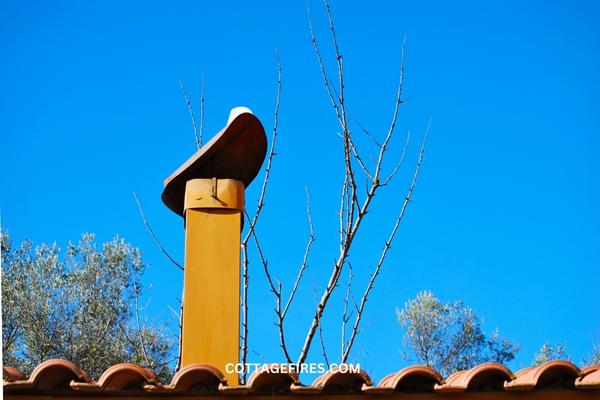Does a Gas Fireplace require Flue? (Know this Things)

You looked at gas fireplaces, and it got you wondering why some of the gas fireplaces do have a flue, and some don’t. So do they require a flue?
The answer to this is yes and no; it depends on what type of gas fireplace you are thinking of getting. The ones with a flue are called vented gas fireplaces, while others without a flue are ventless.
So, to clear the air, let’s discuss this in detail.
Importance of Flue for Gas Fireplace
A flue is nothing but a vertical passage for conveying products of combustion and smoke outside the home. Because we use gas-powered fireplaces, we require a chimney to expel the gases.
It is very important to have a well-structured chimney and flue that protect your family and home from the dangers of noxious gases such as carbon monoxide and the high levels of heat present.
Ventless Gas Fireplace Flue
The other day, the one you saw without a flue was a ventless gas fireplace. They don’t have or require a flue because they aren’t designed to vent either clean or wasted air to or from home.
They burn so cleanly that they’re rated for indoor use without direct external ventilation, such as a flue. They take in fresh air from the room and exhaust the waste air back into the room.
Such a mechanism might’ve made you think it might be dangerous.
You need not worry as they are extremely efficient and cleanly burn the fuel using the oxygen available in the room. They then release carbon dioxide, carbon monoxide, and water vapor back into their surroundings.
They don’t require a flue, but an external air vent must be installed in the room to help keep oxygen at an acceptable level.
Vented Gas Fireplace Flue
Unlike ventless gas fireplaces, vented ones do require a flue. To maintain safety. They are particularly divided into two types:
- Direct Vent
- Natural vent
Direct vent gas fireplaces need a flue to function. They use outside air to burn the fire and exhaust waste from your home. They are usually preferred because they are sealed, causing no impact on the air inside the room and just making the environment warm.
They usually have one vent for the air intake and the other for the flue. However, this is most common with older models. The latest products typically use a single air intake pipe that also serves as an exhaust flue.
The other type is a natural vent gas fireplace. They’re also referred to as “B-vent” gas fireplaces, which don’t have a dedicated flue to exhaust the waste air. It uses the associated chimney as its flue. So if you don’t have a chimney, avoid installing this gas fireplace.
Gas Fireplace Flue: Opened or Closed
It is recommended to keep the flue on the gas fireplace open when it is in use. Subtypes of vented gas fireplaces, namely direct vents, and natural vents, might emit dangerous gases, so keeping the flue open is a must. If the pilot light is turned on, but the flue is closed, it can lead to a buildup of propane, resulting in a huge accident.
So make sure to keep the flue open whether the fireplace is in use or the pilot light is on. Close the flue only when it’s not in use.
Note: Keep the flue open if the pilot light is turned on, even if the fireplace isn’t actively burning.
Type of Flue you need for Gas Fireplace.
There are three main types of flues they are as follows.
• Class 1 Flue
• Prefabricated flues
• Pre-Cast Flue
Gas Fireplace without Flue? Is it Possible?
Yes it’s possible not all gas fireplace needs vent. As previously stated, a chimney or flue is not required when using ventless gas fireplaces.
But if you are installing a vented one, remember that it comes with a flue.
Conclusion
So, all things considered, we can conclude that the flue is one of the most important things in a gas fireplace, but only vented appliances require them, and thus we do not see a flue in a ventless gas fireplace.
